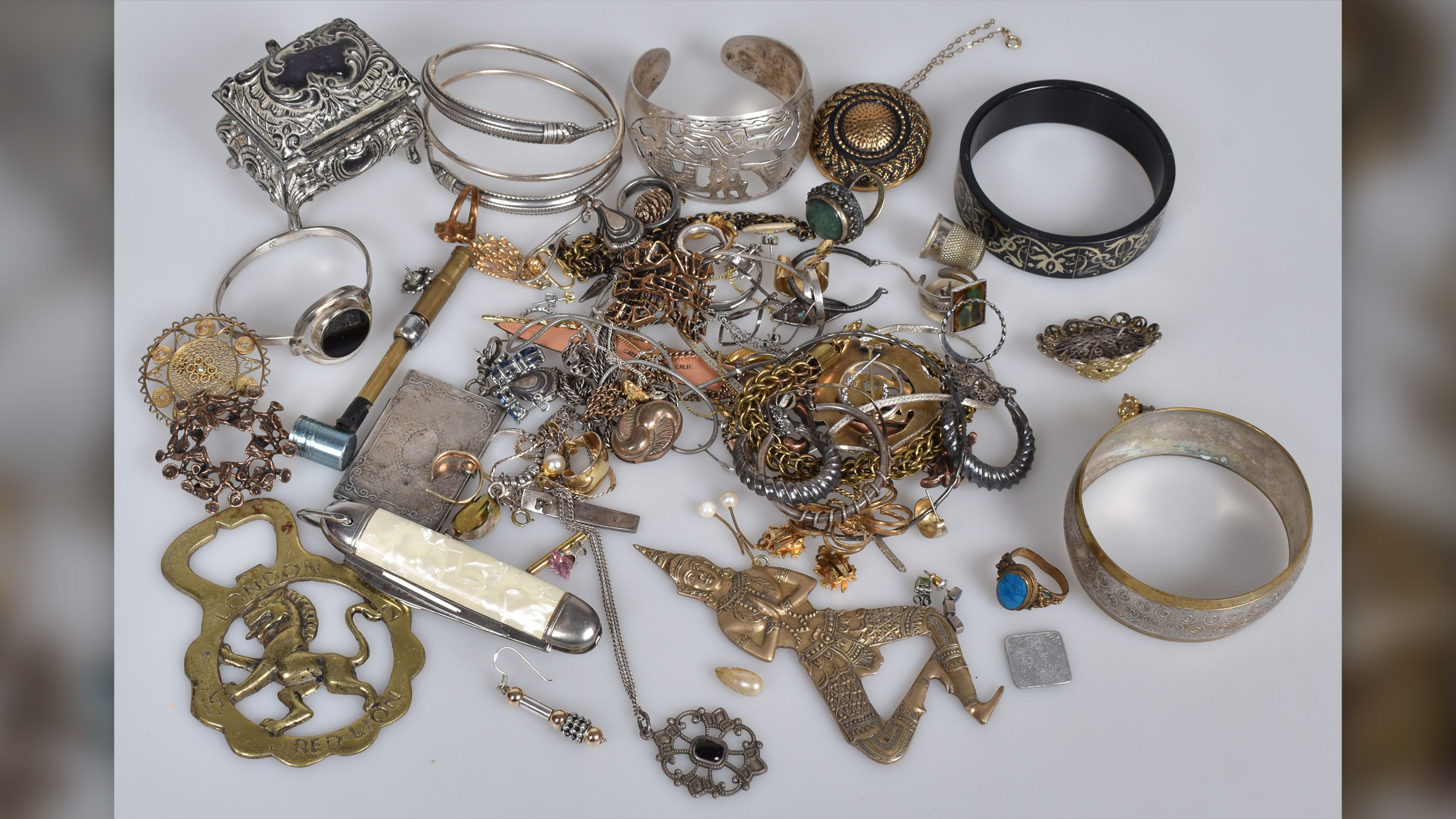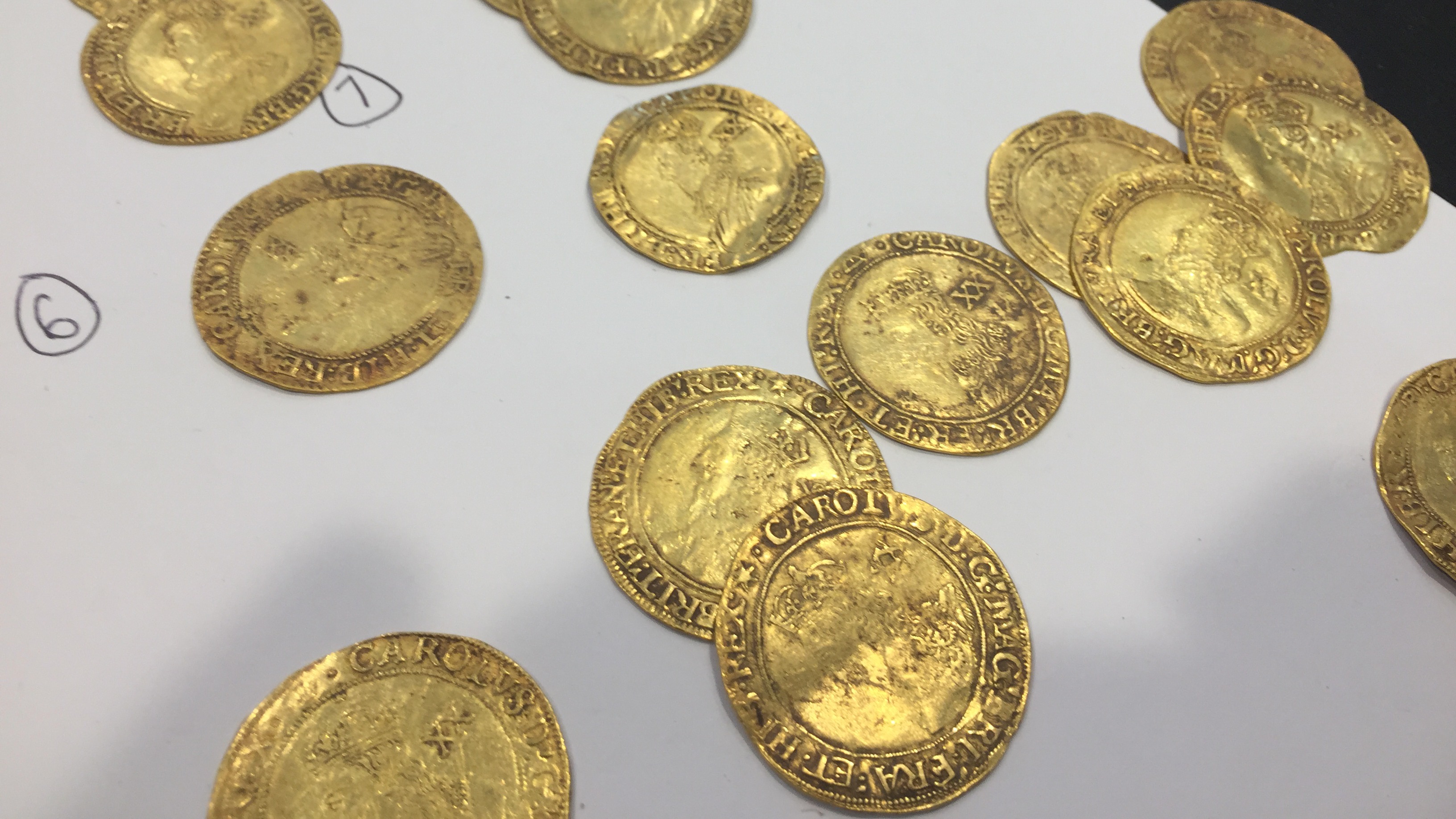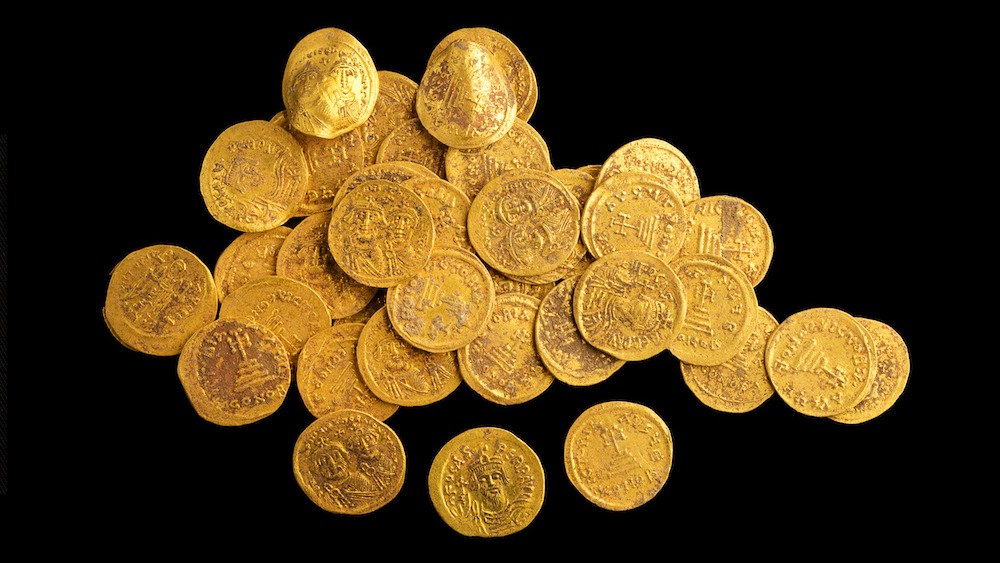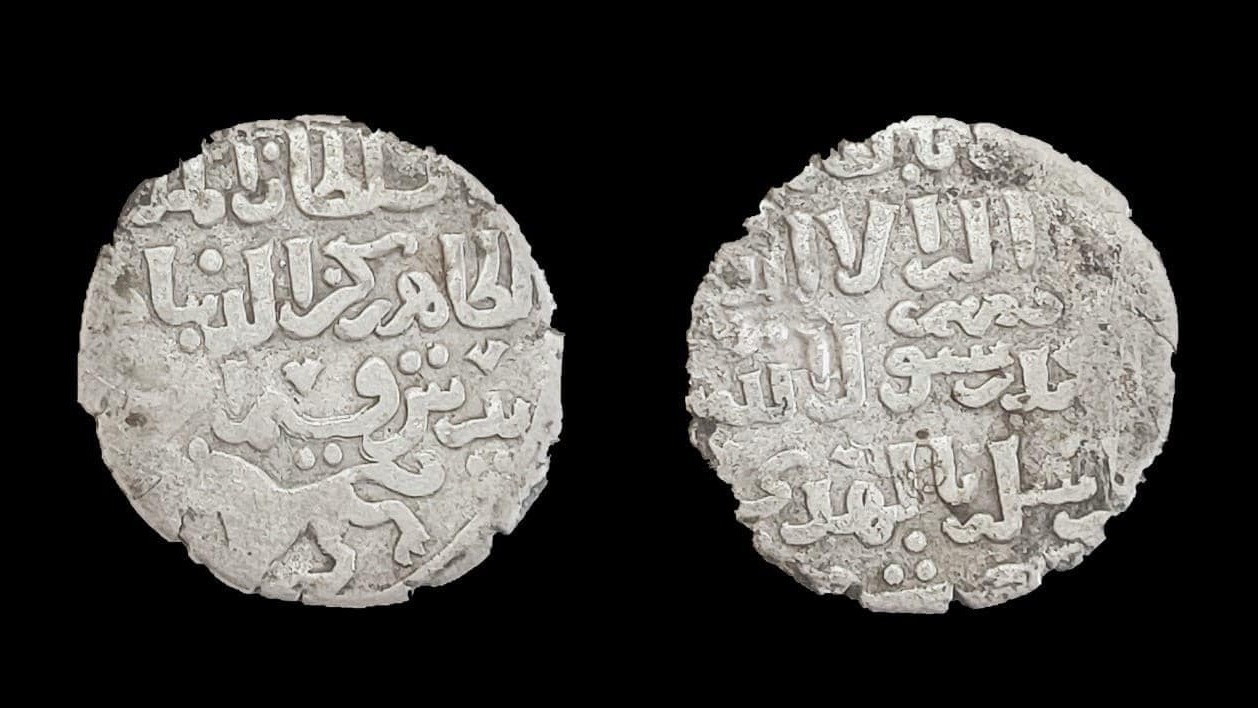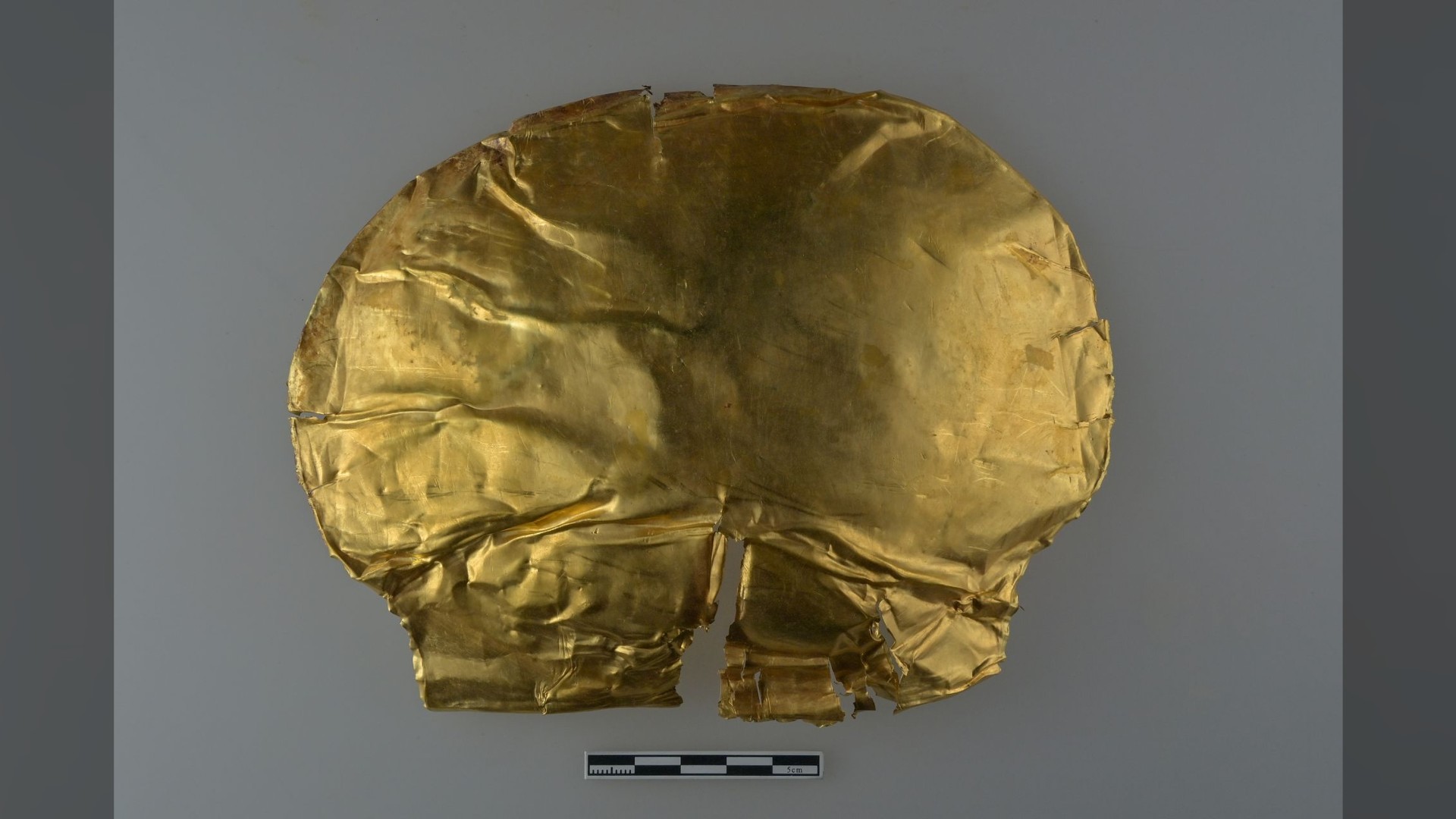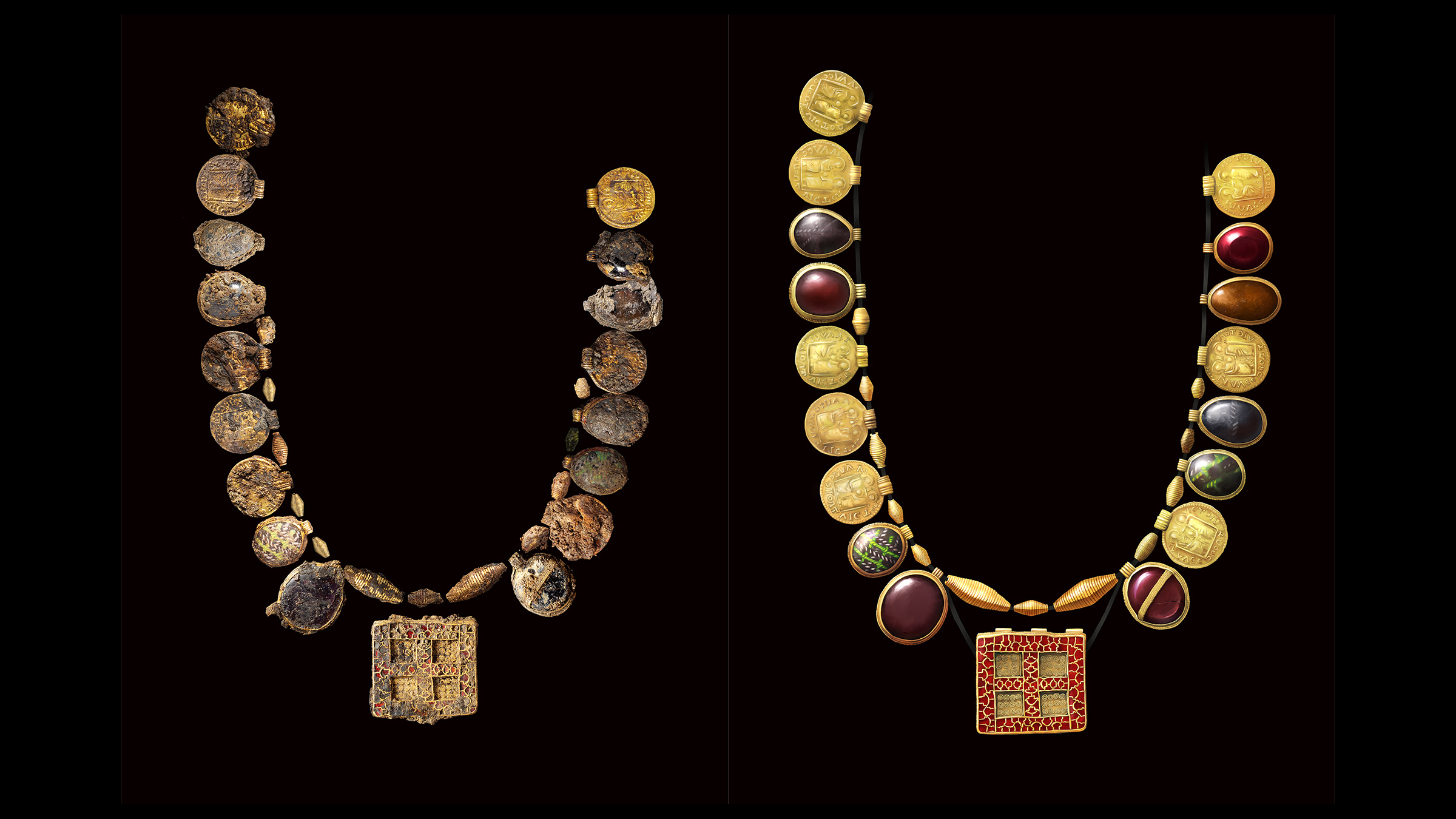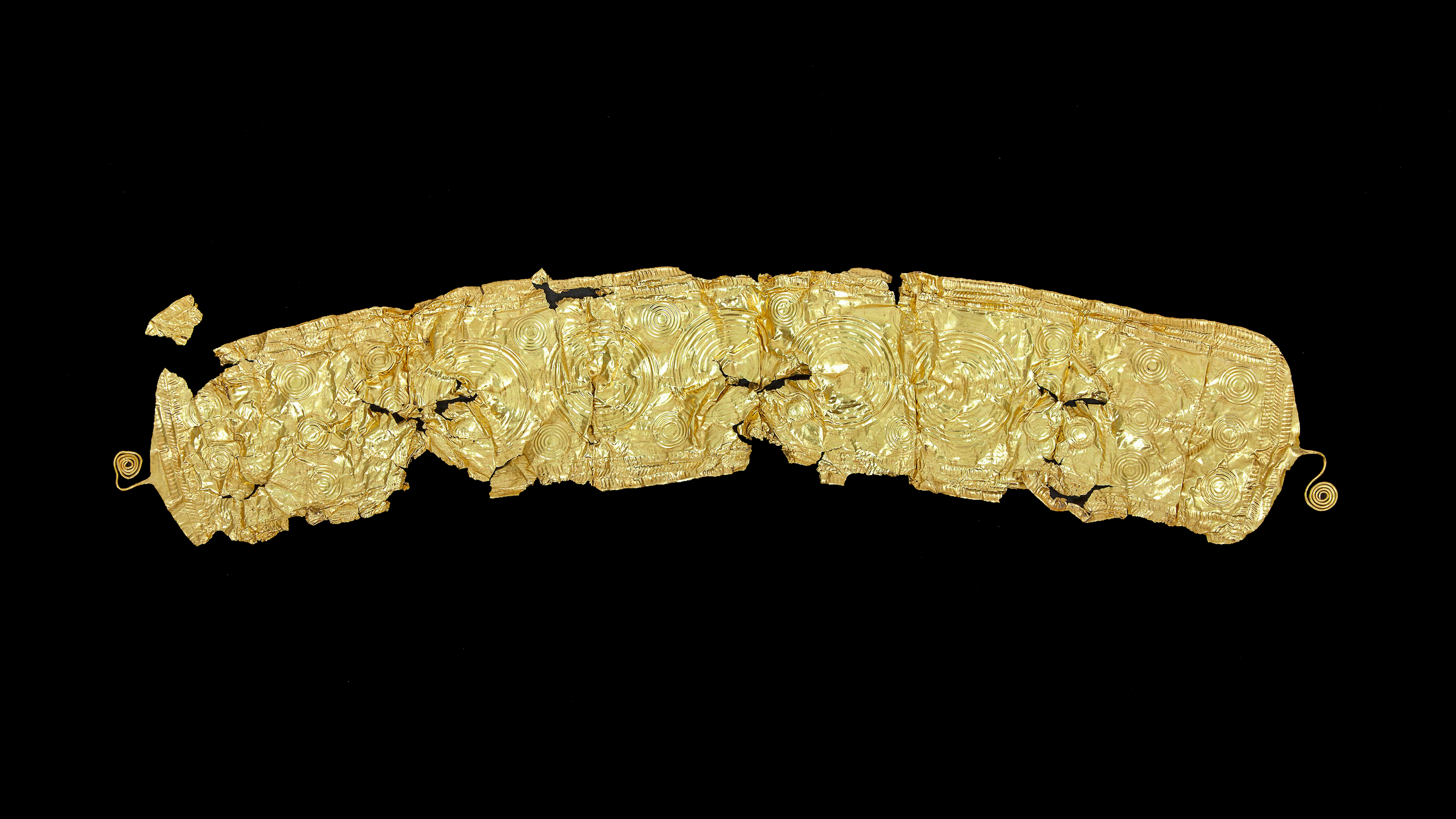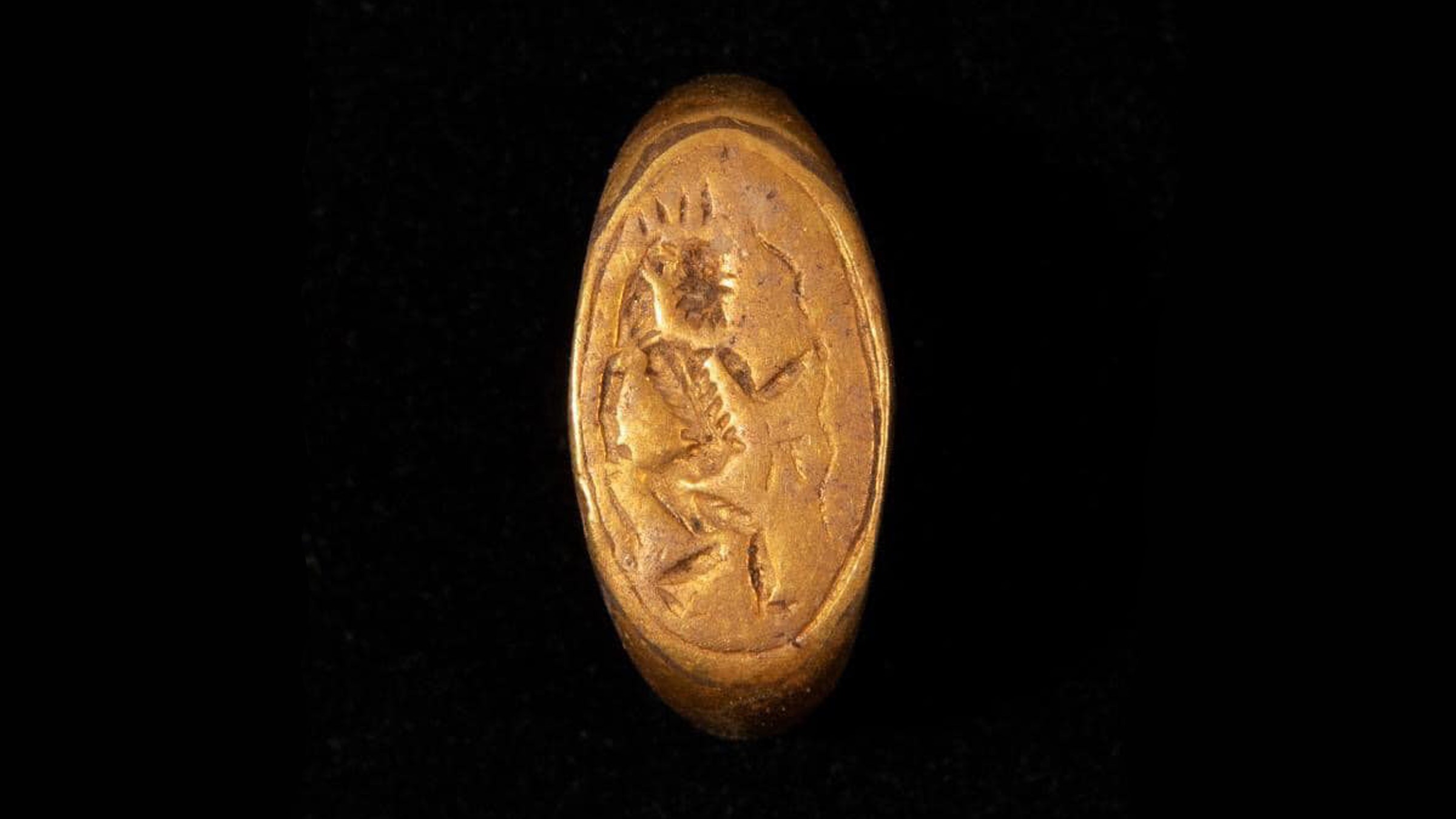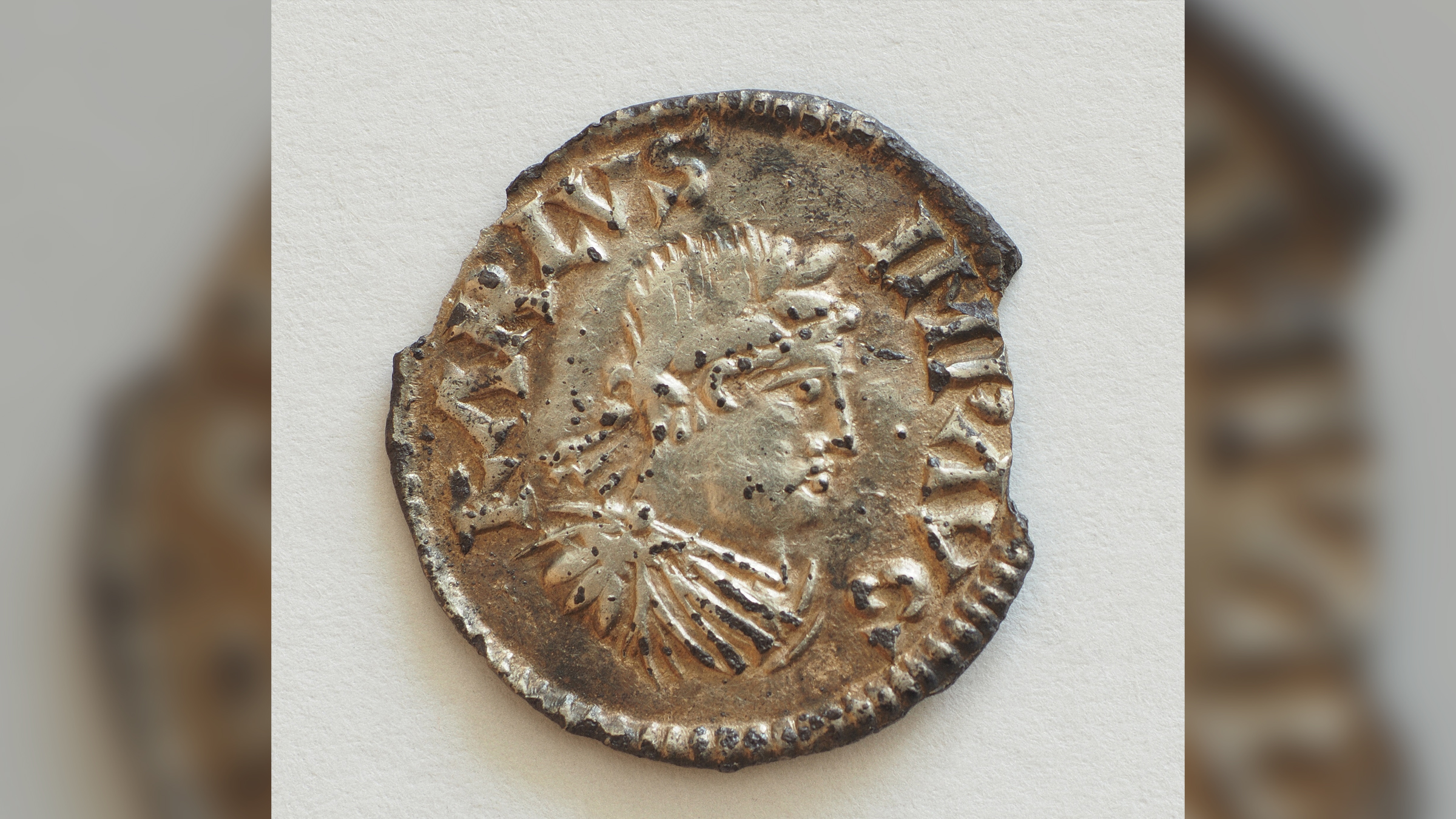10 dazzling gold and silver treasures dug up in 2022
Here are 10 stunning gold and silver treasures, dating from millennia to centuries ago, that came to light in 2022.
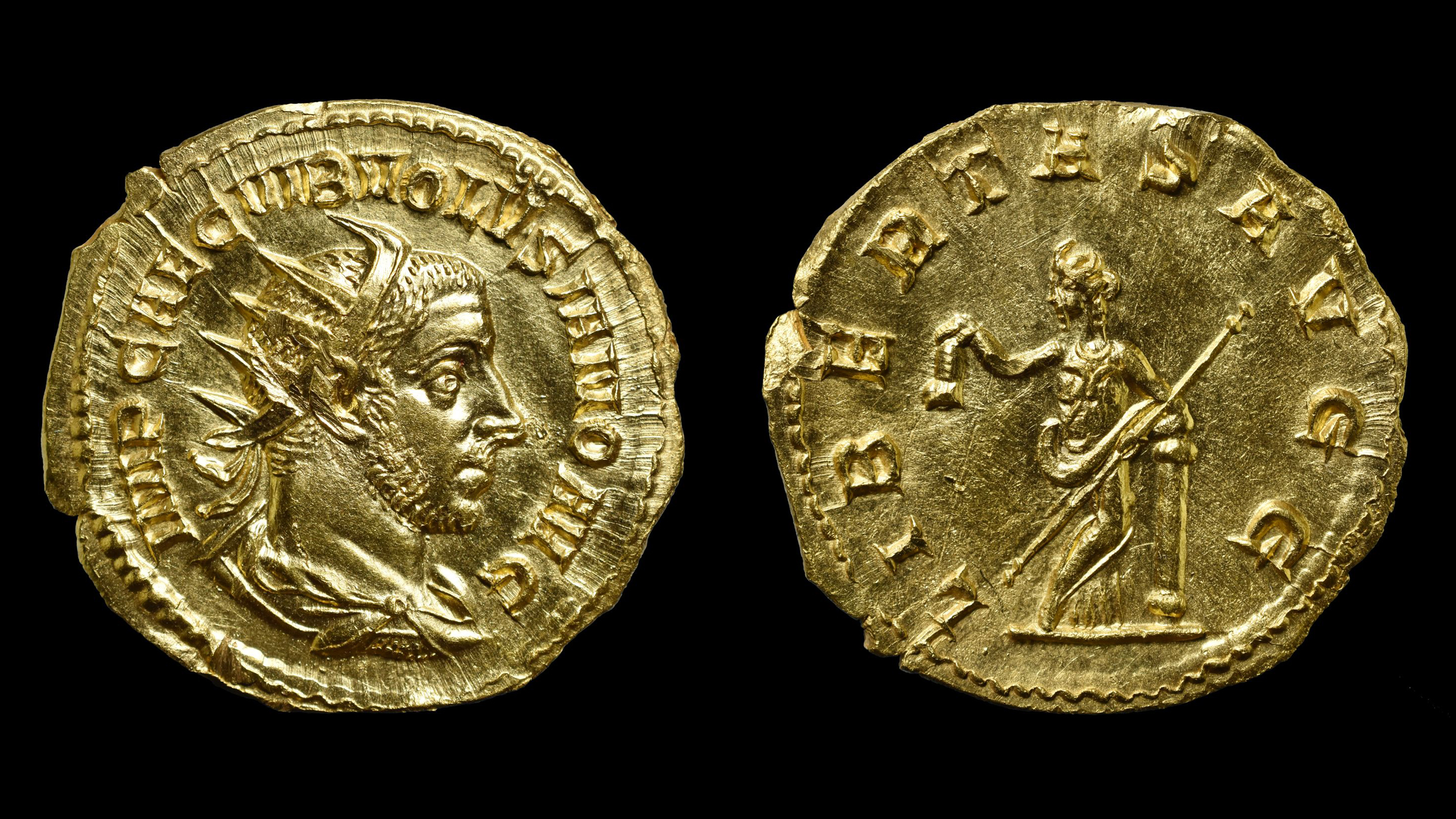
Over the centuries, humans have crafted gold and silver into jewelry, coins and other stunning items. Some of these shiny objects were interred in burials or lost from loose pockets, only to be found hundreds of years to millennia later by archaeologists digging into our past or even unearthed unintentionally by members of the public. Here are 10 extraordinary discoveries that came to light in 2022.
1. 'Cheap jewelry' is really gold Viking ring
When a woman in Norway bought a bundle of cheap jewelry at an online auction, she was expecting to find some fun costume pieces to wear. Instead, she discovered something else entirely: a large gold Viking ring designed from twisted metal strands. The woman showed the ring to archaeologists, who dated it based on its style. According to the archaeologists, a powerful Viking chief may have owned this ring more than 1,000 years ago.
2. Kitchen renovation uncovers coin stash
A routine kitchen renovation led to the discovery of a lifetime: a hoard of gold coins hidden beneath the wooden floorboards of an 18th-century house in the U.K. The stash includes more than 260 gold coins dating from 1610 to 1727 and is estimated to be worth around $290,000 (250,000 pounds).
3. Byzantine gold coins in Israel
Archaeologists on a nature reserve in northern Israel dug up a trove of 44 gold coins dating to the Byzantine Empire (circa A.D. 330 to 1453). These gorgeous coins date to the reigns of Emperor Phocas (A.D. 602 to 610) and Emperor Heraclius (A.D. 610 to 641). The hoard's owner may have buried the stash before fleeing from Muslim soldiers, who invaded the region in A.D. 635.
4. Gold and silver coins near an Egyptian temple
For the last millennium, a cache of gold and silver coins sat buried underground near an Egyptian temple. These coins date to the Islamic era, which lasted from A.D. 610 until the 13th century. The coins are varied, including 286 silver coins of kings and kingdoms from that time, gold coins, a coin from what is now Armenia that was minted during King Leo II's reign in the 13th century, and bronze and brass coins from the Ottoman Empire.
5. 3,000-year-old gold funeral mask from China
The 3,000-year-old tomb of a noble in what is now central China contained a rich treasure: a gold funeral mask, one of the oldest gold objects ever found in the region. The mask is large enough to cover an adult's face and may have symbolized that the deceased had an "imperishable gold body," researchers said.
6. "Abbess" buried with gold-and-garnet necklace
An elite woman buried in seventh-century England was laid to rest with a stunning necklace made of gold, garnets and Roman coin pendants. The burial included two impressive crosses, indicating that this medieval woman may have been an early female Christian leader such as an abbess, or possibly even royalty.
Get the world’s most fascinating discoveries delivered straight to your inbox.
7. Gold coin features assassinated Roman emperor
Excavators unearthed a "very rare" gold coin depicting a murdered Roman emperor in Hungary. The third-century A.D. coin shows the face of Emperor Volusianus, who co-ruled with his father for about two years before his own soldiers killed him and his father. Because Volusianus' reign was so short, coins showing his likeness are rare, especially in Hungary, where Roman gold coins are very uncommon. This coin was very valuable at the time, so losing it must have been a great loss to its owner.
8. Ancient gold belt discovered on beet farm
In the Czech Republic, a beet farmer unexpectedly uncovered a crumpled sheet of gold on his land. The farmer alerted local archaeologists, who determined that the gold treasure was likely the front of a leather belt dating to the Bronze Age, nearly 2,500 years ago. Concentric circles decorating the gold sheet might represent cosmological systems, the archaeologists said. It's unclear who owned the belt, but whoever did was clearly elite.
9. Egyptian ring depicts 'god of fun'
A 3,300-year-old burial from ancient Egypt contained a handful of valuable jewelry, including a gold ring with an engraving of the "god of fun." This deity, Bes, was often depicted as a dwarf and was usually portrayed playing music and having a good time. However, Bes was also known for protecting women during childbirth. Archaeologists also found a gold necklace and a ring with an Egyptian hieroglyphic inscription that translates to "Lady of the Earth," but the identity of the woman this inscription refers to is still unknown.
10. Rare coin shows Charlemagne just before his death
There are precious few known portraits of Charlamagne made during his lifetime, but now one of them has been found on a rare, 1,200-year-old coin. The coin ended up in the collection of a French farmer, who left his treasured stash to his grandson. When his grandson went through the coins years later and put the Charlemagne item on eBay, German museum curators jumped at the chance to buy it. Charlemagne (ruled A.D. 768 to 814) had the coin, known as a denarius, portray him like a Roman emperor with a laurel on his hat and the dress of a Roman general, even though the Western Roman Empire had collapsed centuries before. Why? Because the Vatican had just crowned him emperor of the Romans on Christmas day in A.D. 800, so the coin was a fitting symbol.

Laura is the managing editor at Live Science. She also runs the archaeology section and the Life's Little Mysteries series. Her work has appeared in The New York Times, Scholastic, Popular Science and Spectrum, a site on autism research. She has won multiple awards from the Society of Professional Journalists and the Washington Newspaper Publishers Association for her reporting at a weekly newspaper near Seattle. Laura holds a bachelor's degree in English literature and psychology from Washington University in St. Louis and a master's degree in science writing from NYU.


